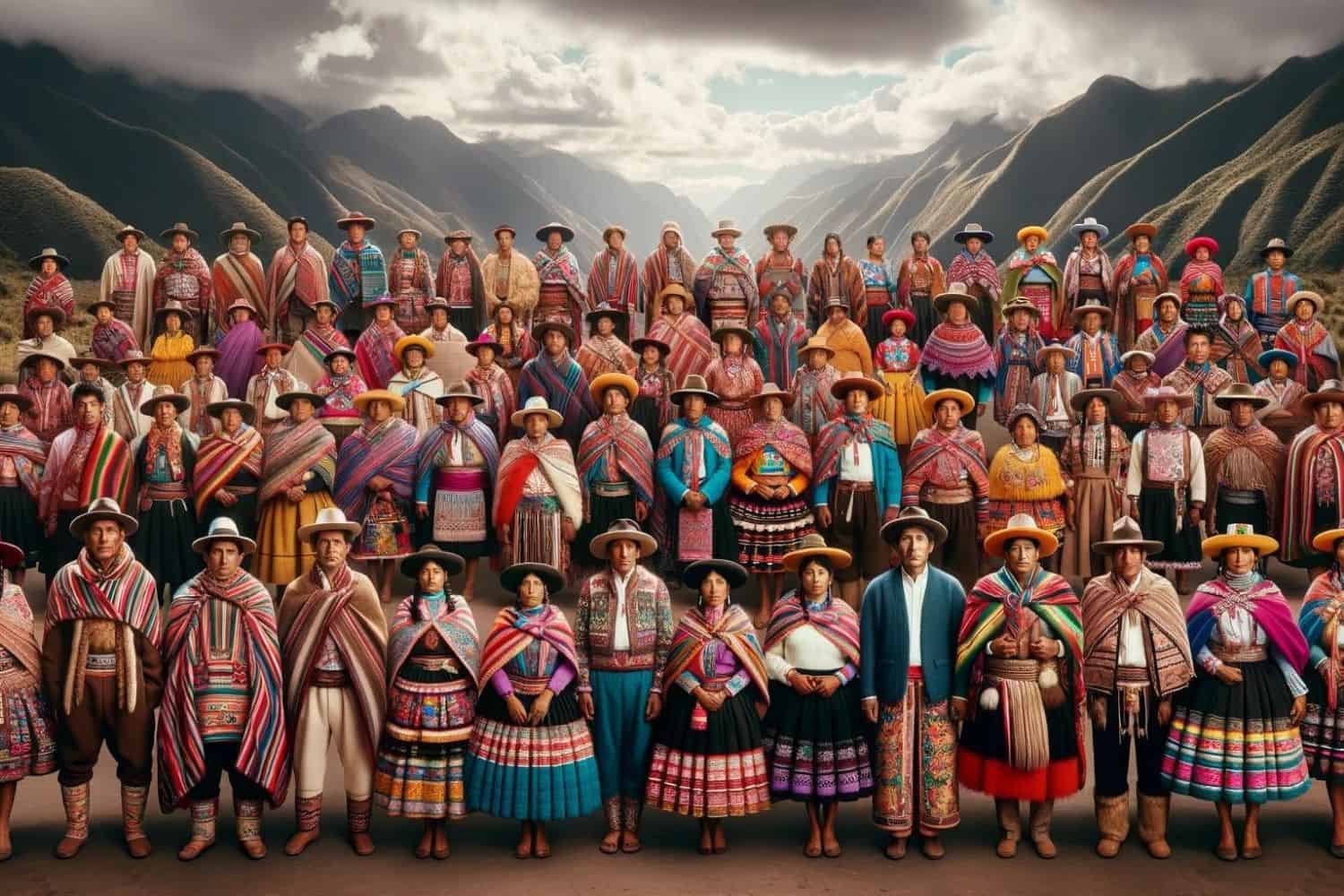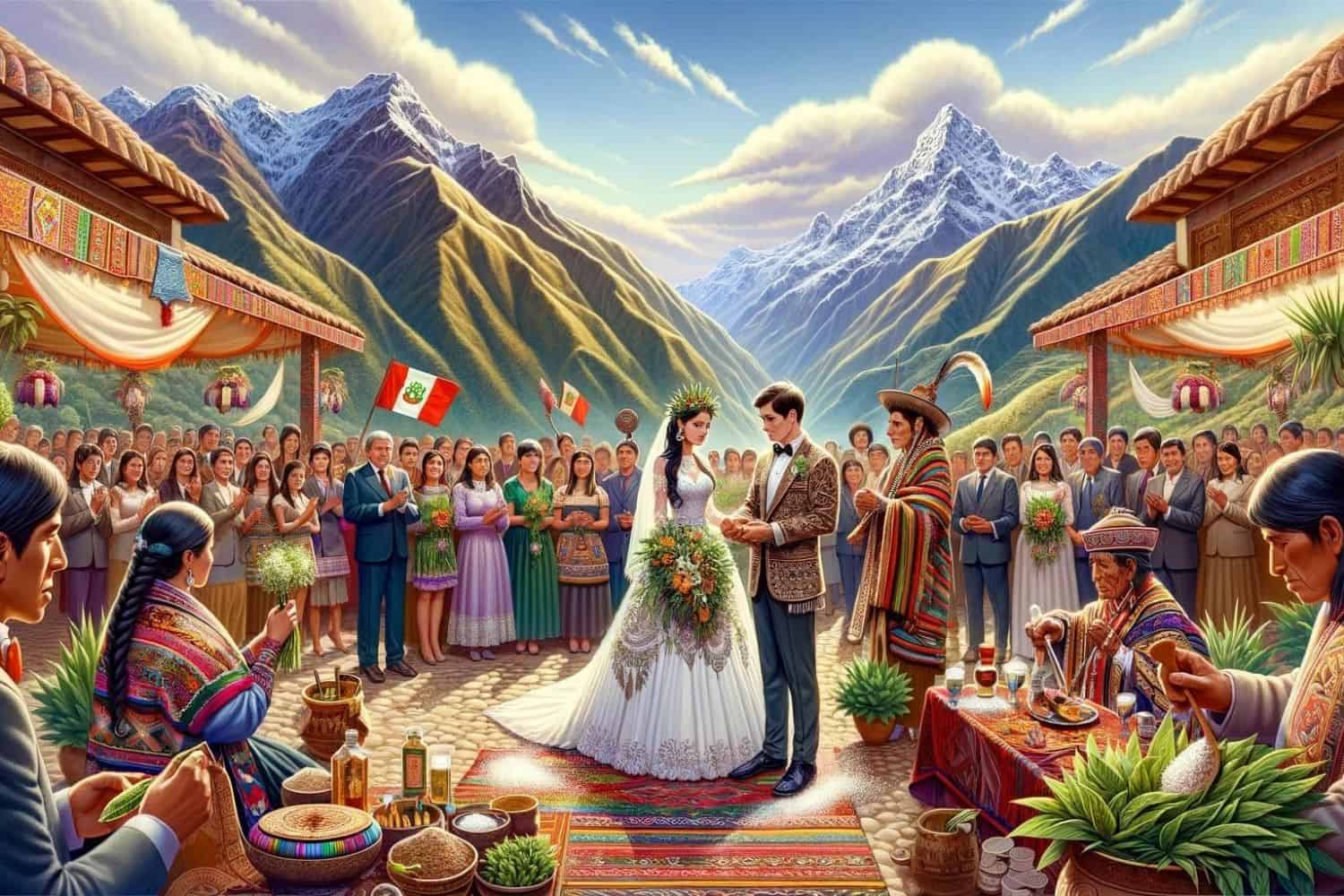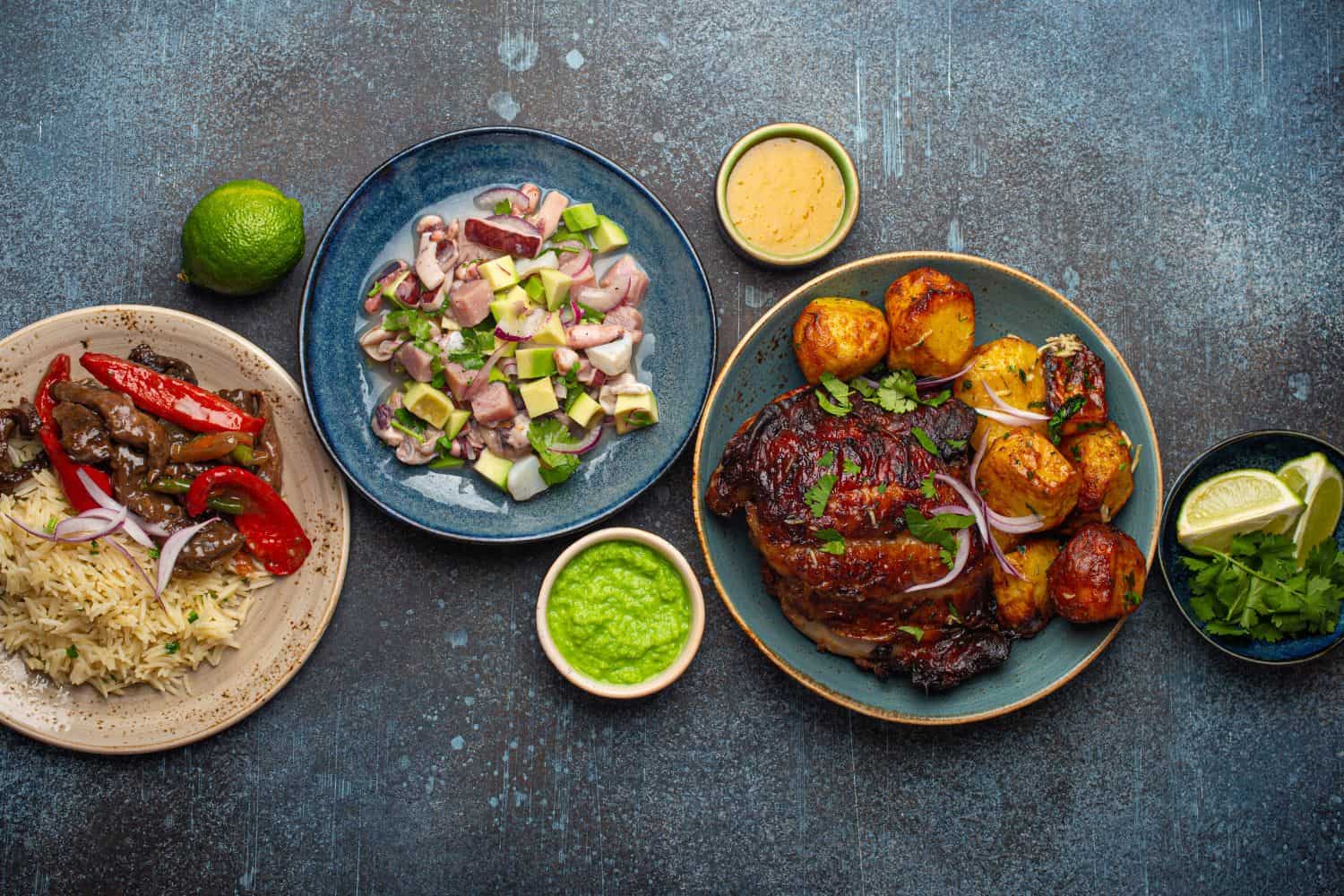Table of Contents
Immerse yourself in Peru culture as we offer you a comprehensive understanding of the customs of Peru, showcasing its rich and diverse heritage, including traditions, values, and unique customs and practices.
Peruvians place a significant emphasis on hospitality, warmly welcoming guests. Family holds a central role in Peruvian society, fostering strong bonds and a profound sense of community. It’s essential to acknowledge that Peru culture is ever-evolving, shaped by historical events, regional dynamics, and global interactions.
Gaining insight into the culture of Peru can provide valuable perspectives into the intricate and varied society of the country.
Peru Culture
Here are the most important points to begin learning about Peru culture and customs:
- Ethnic Diversity: Peru is home to a diverse mix of ethnic groups, each with its own customs and traditions. Indigenous peoples, mestizos, Afro-Peruvians, and others contribute to the country’s cultural tapestry.
- Languages: The official languages of Peru are Spanish and Quechua, but numerous regional languages and dialects are spoken throughout the country.
- Religious Practices: Peru is a predominantly Roman Catholic country, and Catholicism has a significant influence on Peru culture, including religious festivals and traditions. Additionally, indigenous beliefs and practices are still prevalent in many regions.
- Greeting Etiquette: Greetings are an essential part of Peru culture. Handshakes and cheek-kissing are common forms of greeting between friends and acquaintances.
- Traditional Clothing: Traditional Peruvian clothing varies by region and ethnic group. For example, the “pollera” and “montera” are traditional garments for women in some Andean communities, while men often wear ponchos and hats.
- Cuisine: Peruvian cuisine is renowned worldwide and includes dishes such as ceviche, lomo saltado, and causa. It reflects a blend of indigenous, Spanish, African, and Asian culinary influences.
- Hospitality: Peruvians are known for their warm hospitality. When guests visit, they are often offered traditional dishes and refreshments.
- Respect for Elders: Respect for elders is a deeply ingrained custom in Peru. Younger individuals show deference to their seniors through words and actions.
- Arts and Crafts: Peru has a rich tradition of arts and crafts, including pottery, textiles, and intricate jewelry made from materials like silver and gold.
- Music and Dance: Traditional Peruvian music includes instruments like the charango and zampona. Folk dances, such as the Marinera and Huayno, are an integral part of cultural celebrations.
- Celebration of Festivals: Peru celebrates a wide range of religious and cultural festivals, such as Inti Raymi, Carnaval, and Virgen de la Candelaria. These events often involve processions, traditional dances, and feasting.
- Family and Community: Family holds a central role in Peruvian society, and strong community bonds are important for support and social cohesion.
- Gender Roles: Gender roles are evolving in Peru, with increasing gender equality, especially in urban areas. However, traditional gender roles are still prevalent in some rural communities.
- Marriage Customs: Traditional customs like “el padrino” (godfather) and “la madrina” (godmother) play a role in Peruvian marriages. In some regions, arranged marriages are still practiced.
- History and Resilience: Peru’s rich history, including the Inca Empire and Spanish colonization, has shaped its culture, fostering resilience and a sense of heritage.
These customs and practices are essential aspects of Peru culture and are visible in everyday life, reflecting the country’s cultural diversity, traditions, and strong sense of community and identity.
Peru Traditional Attire
Peru traditional attire is a reflection of the country’s diverse cultural heritage, regional variations, and historical influences. The clothing worn by Peruvians not only serves functional purposes but also carries significant cultural and social meanings.

1. Regional Variation: Peru’s traditional clothing varies from region to region, influenced by the local climate, lifestyle, and ethnic traditions. In the colder highland areas of the Andes, people often wear warm, layered garments, while in the coastal regions, lighter clothing is favored due to the warmer climate.
2. Indigenous Attire: Indigenous communities in Peru, such as the Quechua and Aymara, have distinct traditional clothing. This may include brightly colored woven textiles, ponchos, and intricately designed hats. These garments often incorporate ancient weaving techniques and symbolic patterns.
3. Andean Dress: In the Andean highlands, both men and women may wear “chullo” hats, which have ear flaps for added warmth. Women often wear layered skirts known as “polleras” and intricately embroidered blouses.
4. Amazonian Attire: In the Amazon rainforest regions of Peru, traditional attire is adapted to the humid climate. This may include lightweight, breathable garments made from plant fibers and vividly colored decorations.
5. Coastal Clothing: In coastal areas like Lima, people may opt for lighter and more modern attire due to the warm weather. However, traditional clothing, such as the “caballero de la marina” outfit, is still worn during cultural festivals and celebrations.
6. Modesty and Cultural Significance: Traditional Peruvian clothing often emphasizes modesty, with many garments covering the body. The colors, patterns, and textiles used in the clothing often convey cultural, ethnic, or regional identity.
7. Special Occasion Attire: Peruvians dress elaborately for special occasions and celebrations, with garments adorned with intricate embroidery, beadwork, and traditional jewelry. Festivals, religious ceremonies, and weddings are occasions to showcase the finest traditional attire.
8. Adaptation to Modernity: While traditional attire remains important, urbanization and modern influences have led to the integration of Western clothing in daily life, especially in cities like Lima. Many Peruvians wear a combination of traditional and contemporary clothing, reflecting changing lifestyles and global fashion trends.
Peru traditional attire is a vibrant expression of the country’s cultural diversity, history, and identity. It serves as a visual testament to the rich tapestry of traditions that have shaped Peruvian society for centuries.
Peru Marriage Traditions
Peru Marriage Traditions are a blend of indigenous, Spanish, and modern influences, reflecting the country’s diverse cultural heritage. These traditions vary across regions and ethnic groups, but they all play a significant role in Peruvian society.

1. Courtship and Dating: In Peru, couples typically engage in courtship and dating before marriage. While arranged marriages are less common, family approval and involvement are still essential.
2. Proposal and Engagement: The proposal and engagement process varies, but it often involves a formal request for marriage. Rings may be exchanged as a symbol of commitment.
3. Civil and Religious Ceremonies: Peruvian couples may choose to have both civil and religious wedding ceremonies. The civil ceremony is required by law and takes place at a local government office. Religious ceremonies, often held in churches, are also common, with Catholicism being the predominant religion.
4. Traditional Indigenous Elements: Some indigenous communities in Peru incorporate traditional customs into their wedding ceremonies. This may include rituals involving coca leaves, offerings to Pachamama (Mother Earth), and blessings from local shamans.
5. Bridal Attire: Peruvian brides often wear white wedding dresses, similar to Western customs. However, traditional Andean brides may incorporate vibrant textiles and traditional elements into their attire, such as the “manta” (shawl) and “pollera” (skirt).
6. Exchange of Coins: A Peruvian wedding tradition involves the exchange of coins known as “arras.” These thirteen coins represent shared responsibilities and prosperity for the couple. The groom presents them to the bride during the ceremony.
7. Throwing of Rice: After the ceremony, guests may throw rice or flower petals at the newlyweds as a symbol of fertility and good luck.
8. Reception and Celebration: Peruvian wedding receptions are lively affairs with music, dancing, and feasting. Traditional Peruvian dishes, such as ceviche and anticuchos, are often served, along with a variety of sweets and desserts.
9. Wedding Cake and Toasts: A wedding cake is a common feature at Peruvian weddings, and the couple may cut it together. Toasts with champagne or Pisco, a Peruvian liquor, are made to celebrate the union.
10. Contemporary Changes: In modern Peru, there is a growing trend toward love marriages and individual choice in partners. However, many traditional customs and ceremonies continue to be observed, especially in rural and indigenous communities.
Peru marriage traditions showcase the country’s cultural diversity and the blending of indigenous and Spanish influences. These traditions emphasize the importance of family, community, and shared celebrations, making weddings significant cultural events in Peru.
Peru Food Culture
Peru food culture is a vibrant and diverse reflection of the country’s history, geography, and the fusion of indigenous, Spanish, African, and Asian culinary influences.

- Regional Variation: Food from Peru diverse geography, encompassing coastal deserts, Andean mountains, and Amazon rainforests, has led to a wide range of regional cuisines. Each region integrates local ingredients and culinary techniques, resulting in a rich tapestry of flavors unique to each area.
- Staple Foods: Peruvian cuisine relies on staple foods like potatoes, corn, quinoa, and rice. Potatoes, in particular, come in a vast array of varieties and are a fundamental component of many dishes.
- Seafood: Due to its long coastline, Peru is known for its exceptional seafood. Ceviche, a dish of raw fish or seafood marinated in citrus juices, is a national favorite. Other seafood dishes like “tiradito” and “arroz con mariscos” are also popular.
- Meat and Poultry: Peruvian cuisine features a variety of meats, including beef, chicken, and lamb. “Lomo saltado” (stir-fried beef), “anticuchos” (grilled skewers), and “pollo a la brasa” (rotisserie chicken) are well-loved dishes.
- Potent Flavors: Peruvian cuisine is known for its bold and vibrant flavors, often achieved through the use of ingredients like aji peppers, cilantro, garlic, and various spices. Aji amarillo, a yellow chili pepper, is a common spice used to add heat and flavor.
- Fusion Cuisine: Peru’s culinary heritage is shaped by a fusion of indigenous, Spanish, African, and Asian influences. Chinese and Japanese immigrants have made significant contributions to the cuisine, leading to dishes like “chifa” (Chinese-Peruvian) and “nikkei” (Japanese-Peruvian).
- Pisco and Cocktails: Pisco, a grape brandy, is the base for the national cocktail, the “pisco sour.” Peru also boasts a diverse range of other cocktails, including the “chilcano” and “maracuya sour.”
- Street Food: Peruvian street food is a thriving part of the food culture. Stalls and carts offer dishes like “anticuchos,” “empanadas,” and “tequeños” to passersby.
- Traditional Desserts: Peruvian desserts are rich and indulgent, often featuring ingredients like condensed milk and fruits. “Tres leches,” “alfajores,” and “picarones” are popular sweets.
- Chicha and Inca Kola: Traditional beverages like “chicha morada” (purple corn drink) and the bright yellow “Inca Kola” hold special places in Peru culture.
- Celebratory Feasts: Festivals and celebrations are accompanied by large feasts and communal gatherings. Traditional dishes are prepared and shared during these events, creating a sense of unity and cultural identity.
- Resurgence of Indigenous Ingredients: In recent years, there has been a resurgence of interest in traditional indigenous ingredients and cooking techniques, leading to a renewed appreciation for native Peruvian foods.
Book our services
These guiding services ensure that your journey is not only enjoyable but also informative and hassle-free. Peru’s cultural delights, historical marvels, and natural wonders await your exploration with RJ Travel LLC. Our Peru Private Tours are designed to immerse you in the rich cultural heritage, historical significance, and breathtaking landscapes of this extraordinary nation.
Contact Us and our team will make sure to help you plan your trip to Peru when it’s safe and ready for travel. Whether you’re interested in joining a pre-arranged Peru small group tour or creating a custom itinerary, we are here to make your Peruvian adventure an unforgettable reality.
More About Peru
[the-post-grid id=”50410″ title=”Peru Main page”]
Book Your Trip to Peru Today!
Embark on an unforgettable journey and explore the allure of Peru through our exclusive tours.
